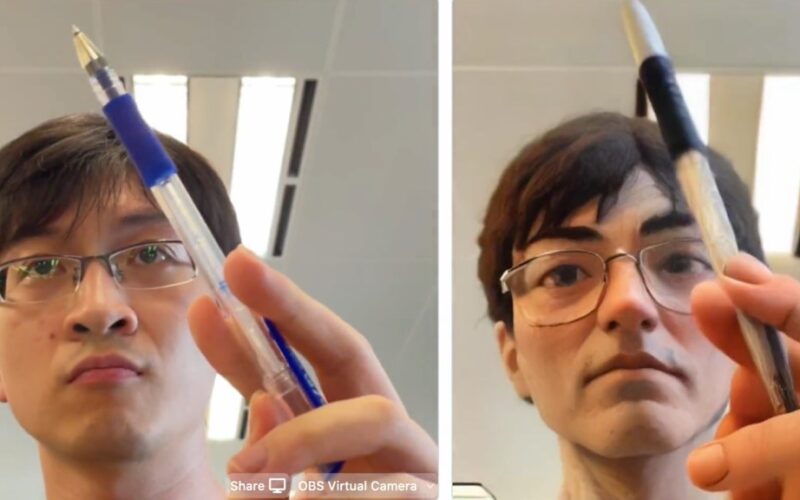Join our daily and weekly newsletters for the latest updates and exclusive content on industry-leading AI coverage. Learn More
A team of international researchers has developed an AI system capable of reimagining live video streams into stylized content in near real-time. The new technology, called Live2Diff, processes live video at 16 frames per second on high-end consumer hardware, potentially reshaping applications from entertainment to augmented reality experiences.
Live2Diff, created by scientists from Shanghai AI Lab, Max Planck Institute for Informatics, and Nanyang Technological University, marks the first successful implementation of uni-directional attention modeling in video diffusion models for live-stream processing.
“We present Live2Diff, the first attempt at designing a video diffusion model with uni-directional temporal attention, specifically targeting live-streaming video translation,” the researchers explain in their paper published on arXiv.
This novel approach overcomes a significant hurdle in video AI. Current state-of-the-art models rely on bi-directional temporal attention, which requires access to future frames and makes real-time processing impossible. Live2Diff’s uni-directional method maintains temporal consistency by correlating each frame with its predecessors and a few initial warmup frames, eliminating the need for future frame data.
Real-time video style transfer: The next frontier in digital content creation
Dr. Kai Chen, the project’s corresponding author from Shanghai AI Lab, explains in the paper, “Our approach ensures temporal consistency and smoothness without any future frames. This opens up new possibilities for live video translation and processing.”
The team demonstrated Live2Diff’s capabilities by transforming live webcam input of human faces into anime-style characters in real-time. Extensive experiments showed that the system outperformed existing methods in temporal smoothness and efficiency, as confirmed by both quantitative metrics and user studies.
The implications of Live2Diff are far-reaching and multifaceted. In the entertainment industry, this technology could redefine live streaming and virtual events. Imagine watching a concert where the performers are instantly transformed into animated characters, or a sports broadcast where players morph into superhero versions of themselves in real-time. For content creators and influencers, it offers a new tool for creative expression, allowing them to present unique, stylized versions of themselves during live streams or video calls.
In the realm of augmented reality (AR) and virtual reality (VR), Live2Diff could enhance immersive experiences. By enabling real-time style transfer in live video feeds, it could bridge the gap between the real world and virtual environments more seamlessly than ever before. This could have applications in gaming, virtual tourism, and even in professional fields like architecture or design, where real-time visualization of stylized environments could aid in decision-making processes.
However, as with any powerful AI tool, Live2Diff also raises important ethical and societal questions. The ability to alter live video streams in real-time could potentially be misused for creating misleading content or deepfakes. It may also blur the lines between reality and fiction in digital media, necessitating new forms of media literacy. As this technology matures, it will be crucial for developers, policymakers, and ethicists to work together to establish guidelines for its responsible use and implementation.
The future of video AI: Open-source innovation and industry applications
While the full code for Live2Diff is pending release (expected to launch next week), the research team has made their paper publicly available and plans to open-source their implementation soon. This move is expected to spur further innovations in real-time video AI.
As artificial intelligence continues to advance in media processing, Live2Diff represents an exciting leap forward. Its ability to handle live video streams at interactive speeds could soon find applications in live event broadcasts, next-generation video conferencing systems, and beyond, pushing the boundaries of real-time AI-driven video manipulation.
Source link lol

